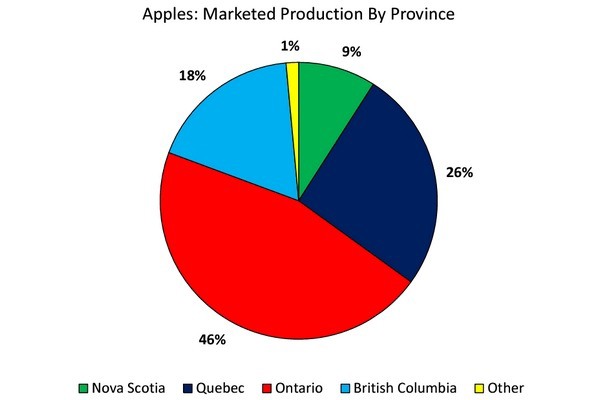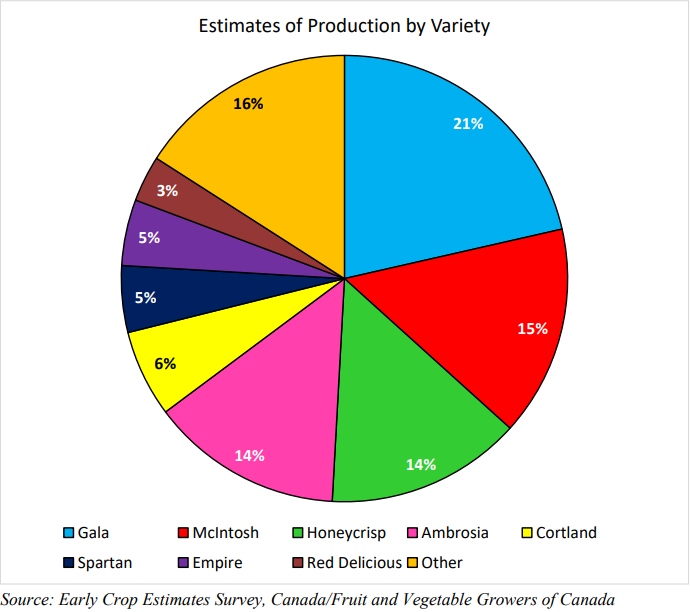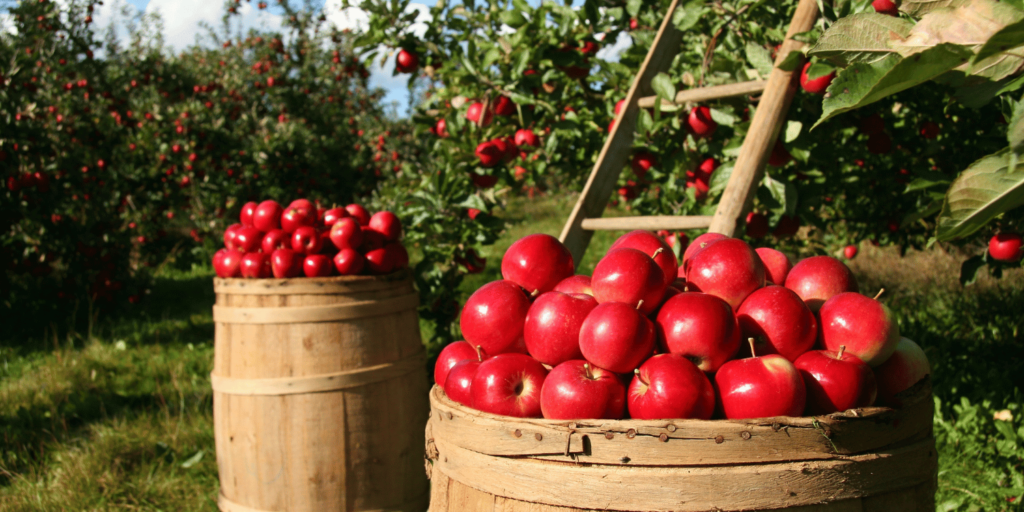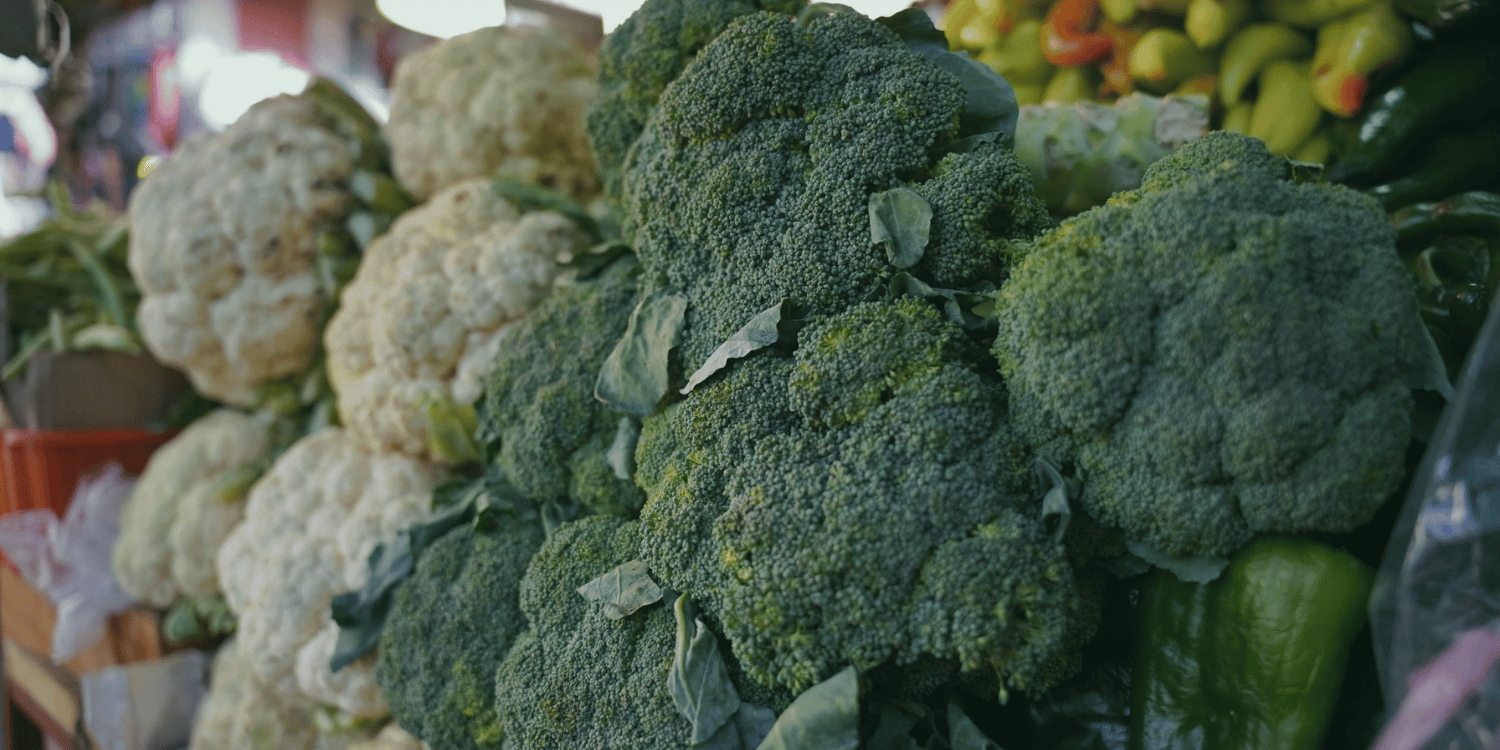Quebec’s apple boom bolsters Canadian production as harsh weather impacts pears and grapes in British Columbia and Ontario.
Canadian apple production is set to grow by 5% in the 2024/25 marketing year (MY), primarily driven by a robust Quebec crop following previous frost challenges.
This increase in Quebec’s production, along with an average yield in Ontario, will contribute to a larger national apple output.
However, the country’s pear production is projected to fall by 9% due to extreme cold in British Columbia, with losses in this region only partially offset by an improved crop in Ontario. Meanwhile, Canada’s table grape production is anticipated to decrease by 16% due to adverse weather conditions in both Ontario and British Columbia.

The Quebec apple crop is expected to exceed the five-year average, benefiting from timely rainfall and minimal hail damage.
After frost affected last year’s production, the province anticipates its largest apple harvest in over a decade, thanks to favorable weather conditions.
Quebec growers continue to adapt to shifting consumer preferences by increasing acreage of popular varieties like Ambrosia, Honeycrisp, and Gala, while still maintaining Canada’s largest McIntosh apple production, though this variety’s popularity has waned.

In Ontario, which typically accounts for nearly half of Canada’s apple yield, this season’s crop is projected to be of average volume but impressive in both size and color, aided by significant rain in key growing regions.
However, the excess moisture in certain areas could slightly reduce the final harvest. The apple crop in British Columbia is predicted to be steady in volume after recovering from a cold January event that posed more of a threat to pears and grapes than apples.
Nonetheless, challenges persist in the region. The closure of the BC Tree Fruits Cooperative’s packing and controlled atmosphere storage facility has left growers scrambling for alternative storage options, potentially increasing the volume of apples sold through late 2024 and affecting prices.

With domestic apple production on the rise, fresh apple imports are forecast to decline slightly by over 2%, reflecting Canada’s stronger supply and a smaller U.S. apple harvest.
On the export side, the larger Canadian crop is expected to drive an 8% increase in apple exports, aided by reduced output in the U.S., which could open up more market opportunities for Canadian apples. Furthermore, Canada’s pear imports are anticipated to dip slightly as U.S. pear production declines, combined with decreasing domestic demand for pears.
Despite the positive outlook for apples, pear production is forecasted to drop by 9% overall due to the severe impact of January’s cold snap in British Columbia, where the pear crop could shrink by as much as 30%.
Conversely, Ontario’s pear crop is set for a notable recovery due to good growing conditions. Nevertheless, the overall national reduction in pear output is expected to persist due to the heavy losses in British Columbia.
The country’s table grape industry faces one of the most significant production declines in MY 2024/25, with a 16% decrease attributed to the extreme cold and frost experienced in British Columbia and Ontario.
Imports of table grapes, however, are forecast to increase by 2%, partly due to California’s expected recovery in table grape production, which should boost exports to Canada.
The Canadian fruit industry remains vigilant as it evaluates future production trends, especially given the rising costs associated with land, labor, and overall production. With shifting consumer demands, industry stakeholders are prioritizing the transition to newer, consumer-preferred apple varieties, replacing older varieties like McIntosh.
Additionally, growers continue to contend with the challenges of labor shortages, while retailers navigate the pressures of inflation and the need to keep prices affordable for Canadian consumers amidst rising living costs. As stated in the report, these factors collectively underscore the complexities faced by the Canadian fruit sector in MY 2024/25.
With information from USDA




















